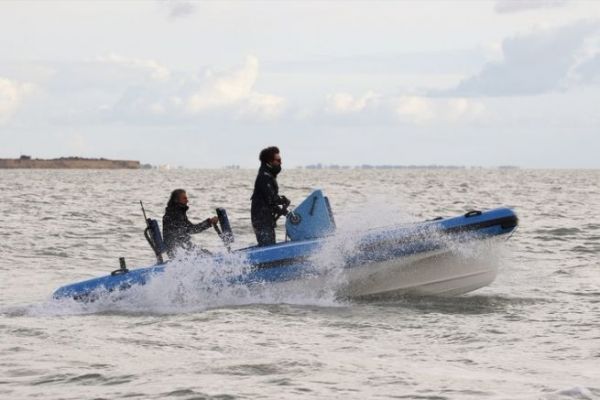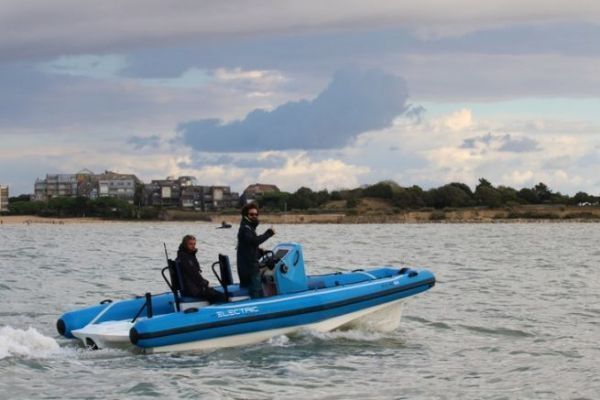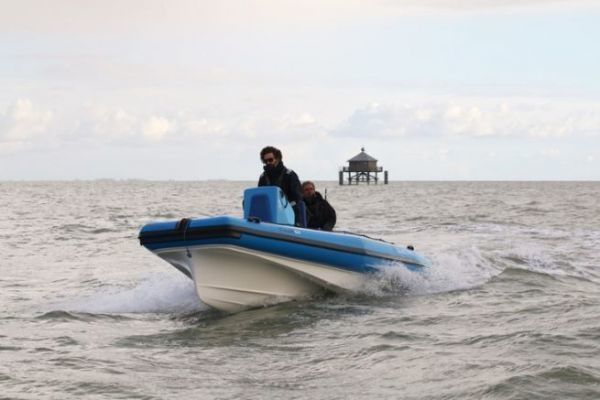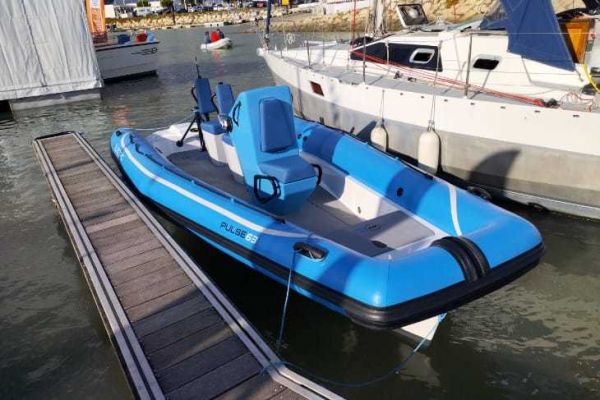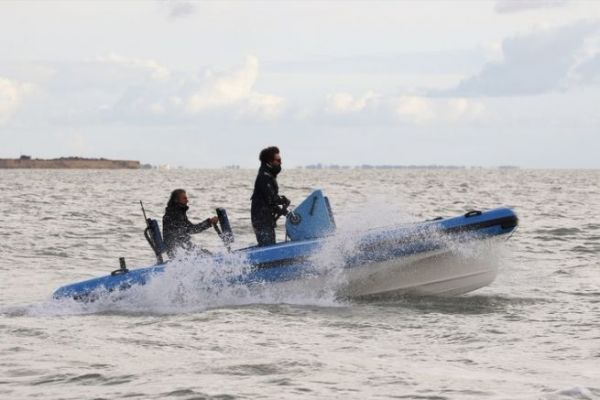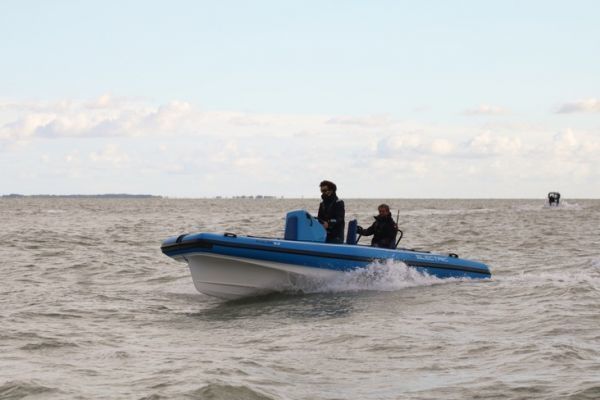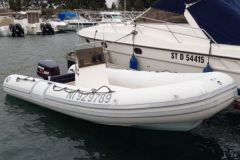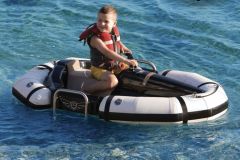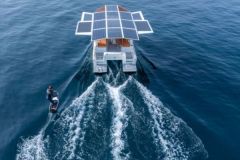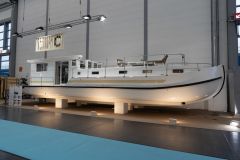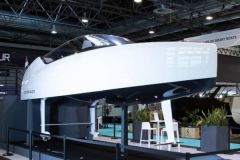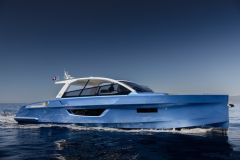Unplug and go
For this test of the Pulse 63, we had an appointment on the pontoons of La Rochelle. The electric RIB, moored at the pontoons of Les Minimes, was ready for departure in no time. Once the cable used to recharge the batteries was disconnected, we could barely hear the 53 kW RAD engine start. Once the mooring lines were cast off, the boat, well maneuvered thanks to the torque of the electric motor, easily left its place, a little cramped at the bottom of the harbor.
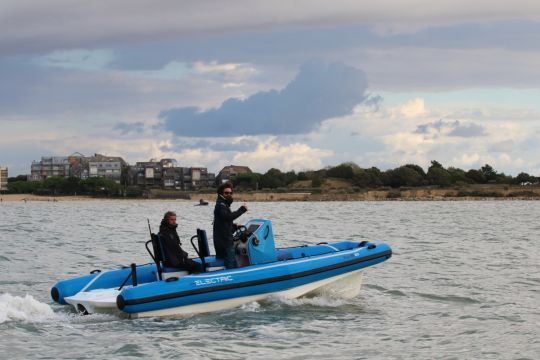
A flawless passage to the sea
The Charente channels offer us the kind of testing conditions they have a secret for. The wind is blowing well and the sailors are returning to port. A short chop rose as soon as they left the harbor. Despite its rather low bow and its reasonable size of only 6.30 m, the shape of the hull and its gull wings play well their role of deflection and shock absorber. The boat remains comfortable and passes the waves well.
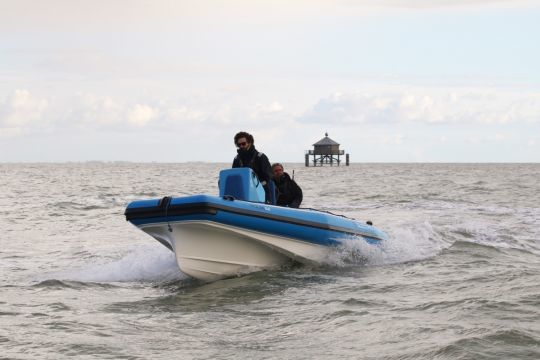
We play with the waves and the Pulse 63 behaves well, both with the waves of the back and the front. In the turns, the RIB stays flat. It's easy to imagine the boat, designed to accompany inshore sailing regattas and to do coaching, turning around racing yachts.
A speed adapted to the program
Comfortably seated in the rider's jockey seat, it's time to check out the pure speed performance of the Pulse 63. No need for a hydraulic suspension seat here. The RIB is designed to have a reserve of power, but not to be a speedometer. In the sea and wind conditions on the day of our test, we reached 16.9 knots, but the sea did not allow us to push the boat to its maximum. The manufacturer claims to reach 23 knots.
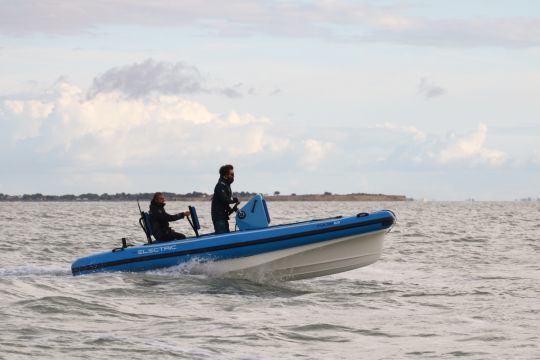
With the torque of the electric motor immediately available, the acceleration is frank. It only takes 10 seconds to reach lift-off and 19 seconds to stall at top speed.
During our test, the instantaneous consumption was not available, but the 46 kWh battery should offer a good autonomy at average speed. The use, as for any electric boat, is not adapted to a high speed navigation. The manufacturer's data show a range of 25 miles at 20 knots, and 100 miles at 5 knots, or 20 hours.
A layout to be adapted to the program
The boat tested was in coaching configuration. It did not have a windscreen on the console, but it was still reasonably protected. The option may nevertheless be welcome for more comfort. The easily accessible controls, the steering wheel at the right height and the low bow make the steering position comfortable.
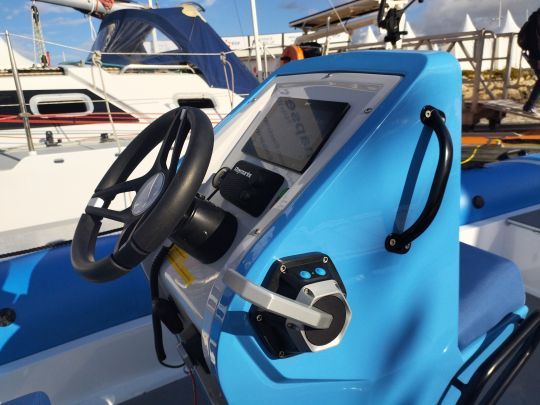
The seats, comfortable for the pilot as well as the rear passenger or in front of the console, will meet the needs of a usual outing, even if some boaters will want more comfort.
In the conditions of La Rochelle, which are not very favorable to small boats, the Pulse 63 is doing well.
